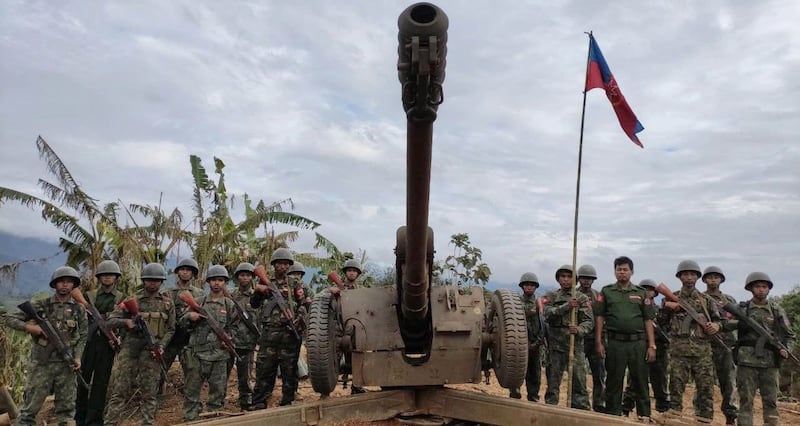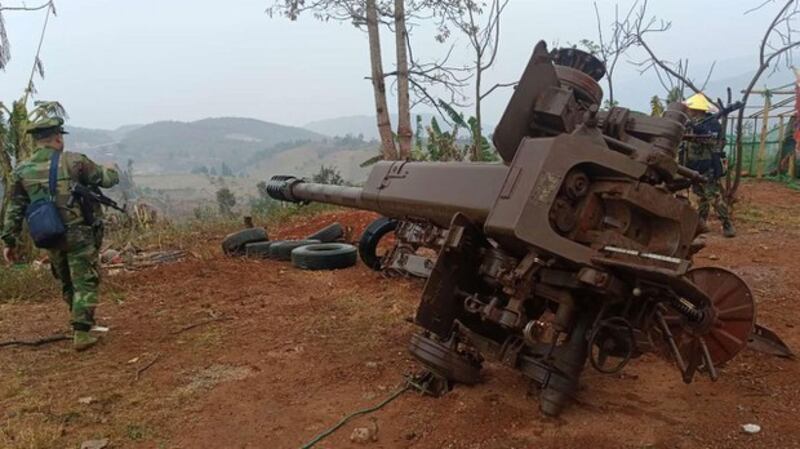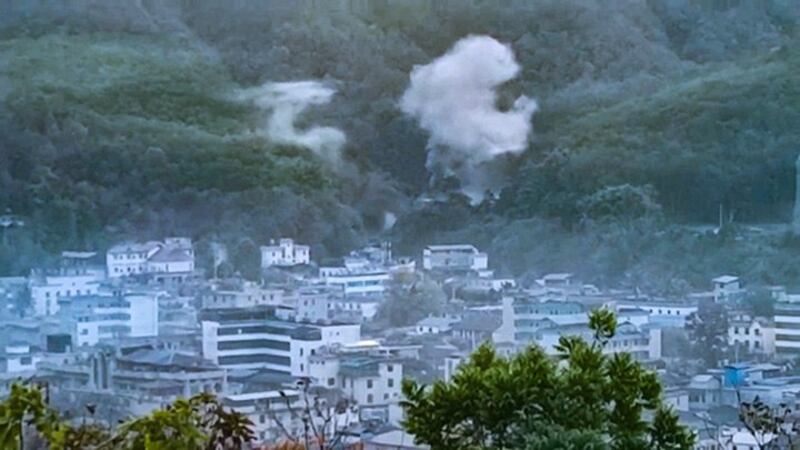While the Three Brotherhood Alliance move to consolidate territorial gains in northern Shan state, and the Arakan Army continues their attacks across Rakhine state, a new offensive against Myanmar’s junta has begun in Kachin state this month.
On March 7, the Kachin Independence Army (KIA) launched an offensive and quickly captured three military junta bases and 11 small outposts along the 120 km-long (72-mile) Myitkyina-Bhampo highway, parallel to the Chinese border. The KIA has sought to both neutralize threats to their capital and control the trade and movement along the highway.
The military has responded with a spasm of air and artillery assaults into Lai Zar, the seat of the KIA’s headquarters. The KIA is now on the outskirts of Myitkyina, the capital and economic hub of Kachin state.

The KIA’s offensive deserves close attention for five reasons.
First, although the KIA was one of the first ethnic resistance organizations to join with the National Unity Government (NUG) and fight the junta after the Feb.1, 20921 coup d’etat, they have been less militarily active since the Three Brotherhood Alliance launched a coordinated offensive on Oct. 27, 2023 that has turned the tide against the junta in Shan state.
The Three Brotherhood Alliance – which includes the Ta’ang National Liberation Army (TNLA), Myanmar National Democratic Alliance Army (MNDAA) and the Arakan Army – took towns across northern Shan state.
In November, the Arakan Army broke their ceasefire with the government and swept across northern Rakhine. The AA is now in control of six townships, and is advancing on the capital. The military government is quickly trying to evacuate civil servants and some forces from Sittwe.
Shan ceasefire
In early January, China brokered a ceasefire between the Three Brotherhood Alliance and the State Administrative Council (SAC), as the junta is formally known.
The ceasefire in northern Shan State has largely held, and both the TNLA and the MNDAA have been focusing on consolidating power in the townships that they captured, imposing law and order, and providing social services.

The ceasefire has allowed the junta to re-group its forces. The military retook Kawlin township in Sagaing after a two week siege. The junta has recently declared martial law in two KIA-controlled and three TNLA-controlled towns in northern Shan, suggesting that they were preparing for a counter-offense and were loosening the rules of engagement for their forces. Now 61 of 330 townships nationwide are under martial law.
Despite a fourth round of Chinese-brokered ceasefire talks from Feb. 29-March 1 that purportedly resulted in a border trade revenue sharing agreement with the MNDAA, the Brotherhood Alliance has more recently signaled that the ceasefire is under threat.
The opening of a new front is essential to prevent further counter-offensives by the junta. The military is now unable to redeploy their forces - already spread thin - from Kachin to Sagaing, Rakhine, or other fronts.
The KIA steps up
Secondly, the KIA’s offensive also matters for harmony among the opposition forces, where there is some frustration that the KIA, which has close relations with the Three Brotherhood Alliance, had largely sat out the Operation 1027 offensive over the past four months.
Fairly or unfairly, carping about the KIA had started to emerge, and critics saw them as not participating sufficiently in Operation 1027, which has fundamentally reshaped the anti-military Spring Revolution's trajectory.
It's not that the KIA has not been fighting. In February, airstrikes in Mansi, a town the KIA captured, left six dead. The past week has seen intense fighting between them and junta forces around the economically important jade mining town of Hpakant.
Criticism of the KIA is not entirely fair. The KIA fought in northern Shan state, taking two towns and other military bases. But some saw the KIA's presence as a power grab that caused tensions with the local Ta'ang community; despite the close ties between the TNLA and KIA.

Third, the KIA has reportedly damaged at least one Mi-17 helicopter at Myitkyina airport. This further dents the air force’s overtaxed fleet of fixed and rotary-wing aircraft.
To date, six other aircraft have been destroyed, including a MiG-29 that crashed on March 1, apparently due to technical malfunctions. The loss of additional heavy-lift aircraft will hurt junta military logistics.
Already the military has shown severe strains in maneuver and resupply, including in Rakhine where the Arakan Army has recently sunk four naval troop carriers. In other parts of the country, helicopters are absolutely essential for military sustainment.
Interviews with defecting junta troops have made clear that the SAC’s inability to resupply troops with ammunition, food, and water – while ferrying in reinforcements and carrying out wounded soldiers – has led to plummeting morale.
China border
As we have seen in both Rakhine and Shan states, the light infantry battalions that have surrendered are severely undermanned, prompting conscription.
Recently, the military leadership ordered family members of troops to be deployed to frontline outposts. Pictures emerged on social media of wives in foxholes. This was designed to both shore up the depleted manpower, but also motivate the troops to fight and hold their positions at all costs.
Unsurprisingly, it has had just the opposite effect, with troops surrendering in order to save the lives of their family members, and often at the encouragement of their wives.
Fourth, although the KIA is leading the offensive it includes an allied ethnic resistance organization as well as people’s defense forces from the shadow opposition National Unity Government (NUG). Joint operations are essential in building up trust between these organizations.
Finally, during the junta’s bombardment of Lai Zar, which sits on the border, at least four military artillery shells landed in Chinese territory, destroying several buildings. The military denied firing the shells and blamed the KIA.
While they could have hit China inadvertently because of the poor quality of their troops, it is more likely that the attack was intentional, and done to force China to pressure the KIA into a ceasefire.

Kachin State remains a complex place with its own inter-ethnic tensions. The recent fighting led to the death of a well-known and charismatic ethnic Lisu politician who ran a pro-junta militia.
The Lisu, a very small minority group, looked to the junta for protection. The NUG and their ethnic army allies need to quickly reach out to these groups and offer them assurances.
It’s too soon to determine whether the KIA offensive can be sustained. China is insistent on peace along its border. While the KIA has Chinese backing, it also has agency.
Whether it has the will to broaden the offensive and keep the junta bogged down across eight distinct military fronts, remains to be seen. But it is a new front that the beleaguered military leadership can ill-afford.
Zachary Abuza is a professor at the National War College in Washington and an adjunct at Georgetown University. The views expressed here are his own and do not reflect the position of the U.S. Department of Defense, the National War College, Georgetown University or Radio Free Asia.

